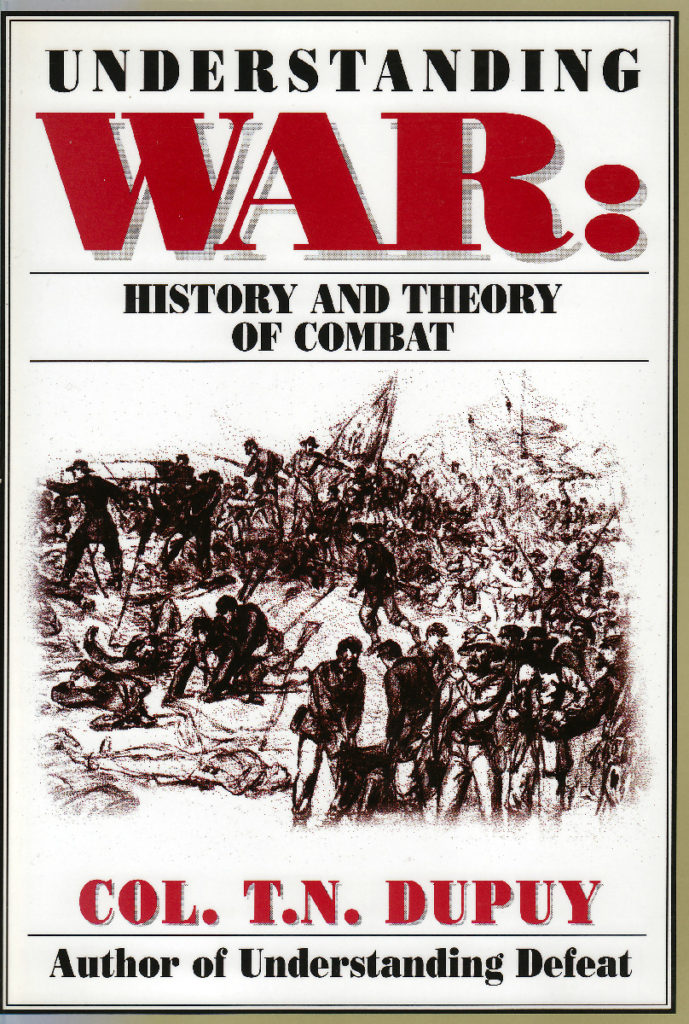 Trevor Dupuy’s combat models (the Quantified Judgement Model (QJM) and the Tactical Numerical Deterministic Model (TNDM)) are formal expressions of his theory of combat. Dupuy provided an extensive discussion of the basis for his theory in his books, particularly Understanding War: History and Theory of Combat (NOVA Publications, 1987). While many are familiar with his models, fewer are aware of the concepts that he based it upon. This will be the first in a series of posts looking at those elements.
Trevor Dupuy’s combat models (the Quantified Judgement Model (QJM) and the Tactical Numerical Deterministic Model (TNDM)) are formal expressions of his theory of combat. Dupuy provided an extensive discussion of the basis for his theory in his books, particularly Understanding War: History and Theory of Combat (NOVA Publications, 1987). While many are familiar with his models, fewer are aware of the concepts that he based it upon. This will be the first in a series of posts looking at those elements.
As Dupuy explained,
As a starting point for an explanation of a scientific theory, it is useful to define fundamental terms, to state and explain critical assumptions, and to establish—or limit—the scope of the discussion that follows. The definitions and explanations that follow are generally consistent with usage in the military and analytical communities, and with definitions that have been formulated for its work by The Military Conflict Institute. However, I have in some instances modified or restated these to conform to my own ideas and usage. [Dupuy, Understanding Combat, 63]
The basic elements of his theory of combat are:
Definition of Military Combat
The Hierarchy of Combat
The Conceptual Components of Combat
The Scope of Theory
Definition of a Theory of Combat
These will each be discussed in future posts.
